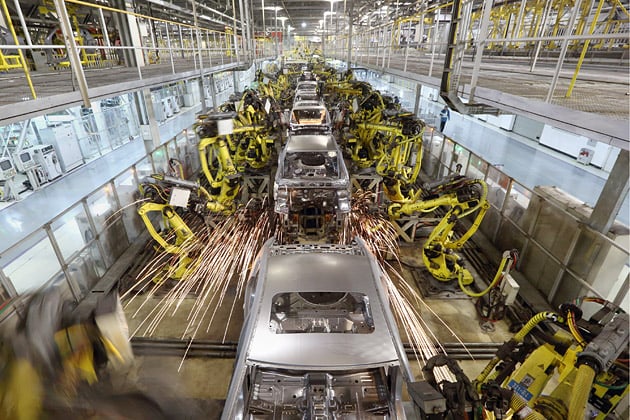
Robotic systems are increasingly prevalent in today’s industrial environments, and the use of industrial robotic arms is becoming more widespread as businesses seek to increase efficiency and productivity. An industrial robotic arm is a programmable device that can manipulate materials and tools to perform a range of tasks, from assembly and welding to packaging and palletizing. In this blog post, we will explore the various applications of industrial robotic arms and how they can benefit manufacturing processes.
The Anatomy of an Industrial Robotic Arm
An industrial robotic arm is composed of several parts, including the base, the shoulder, the elbow, the wrist, and the end effector. The base is the foundation of the arm and is typically mounted on a pedestal or base plate. The shoulder is the joint that connects the base to the upper arm, while the elbow joint connects the upper and lower arm segments. The wrist joint enables the arm to rotate and move laterally, while the end effector is the tool or gripper that is attached to the arm to perform a specific task.
Applications of Industrial Robotic Arms
One of the most significant advantages of industrial robotic arms is their versatility. They can be programmed to perform a wide range of tasks, from simple pick-and-place operations to complex welding and painting processes. Some common applications of industrial robotic arms include:
Assembly: Robotic arms can be programmed to assemble parts, such as automotive components or electronic devices, with speed and precision.
Welding: Industrial robotic arms can perform welding operations in a variety of industries, including automotive, aerospace, and construction.
Packaging: Robotic arms can be used to package products, such as food and beverages, in a variety of formats, including boxes, bags, and bottles.
Palletizing: Industrial robotic arms can stack and organize products onto pallets for shipping and storage.
Inspection: Robotic arms can be equipped with sensors and cameras to perform quality inspections on products, detecting defects and inconsistencies in real-time.
Benefits of Industrial Robotic Arms
The use of industrial robotic arms can offer numerous benefits to businesses, including increased productivity, improved product quality, and reduced labor costs. By automating repetitive or dangerous tasks, businesses can free up human workers to focus on more complex and creative tasks. Additionally, robotic arms can perform tasks with greater precision and accuracy than human workers, leading to improved product quality and reduced waste. Finally, the use of robotic arms can result in cost savings over time, as businesses can reduce their reliance on human workers and minimize the risk of workplace injuries.
Selecting the Right Industrial Robotic Arm
When selecting an industrial robotic arm, there are several factors to consider, including the payload capacity, reach, and speed of the arm. The payload capacity refers to the maximum weight that the arm can lift, while the reach refers to the maximum distance that the arm can extend. The speed of the arm is also an important consideration, as faster arms can perform tasks more quickly and efficiently. Additionally, the end effector or tool that is attached to the arm must be selected based on the specific task that needs to be performed. For example, a gripper may be suitable for picking up and placing small parts, while a welding torch may be necessary for welding operations.
Conclusion
Industrial robotic arms are powerful tools that can help businesses increase productivity and efficiency while reducing costs and improving product quality. By understanding the anatomy of an industrial robotic arm, the various applications of robotic systems, the benefits of robotic arms, and the factors to consider when selecting the right arm for a particular task, businesses can make informed decisions about integrating robotic systems into their manufacturing processes.
